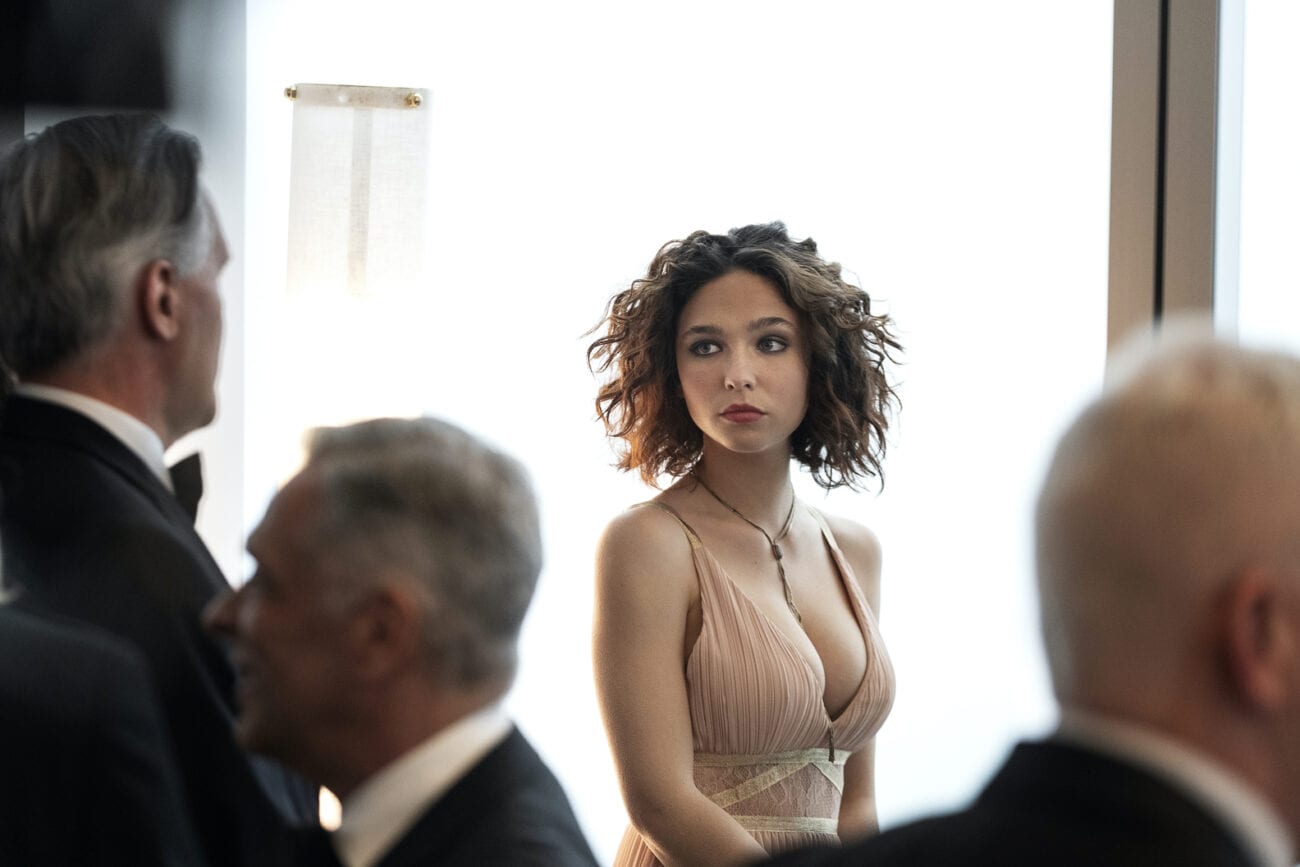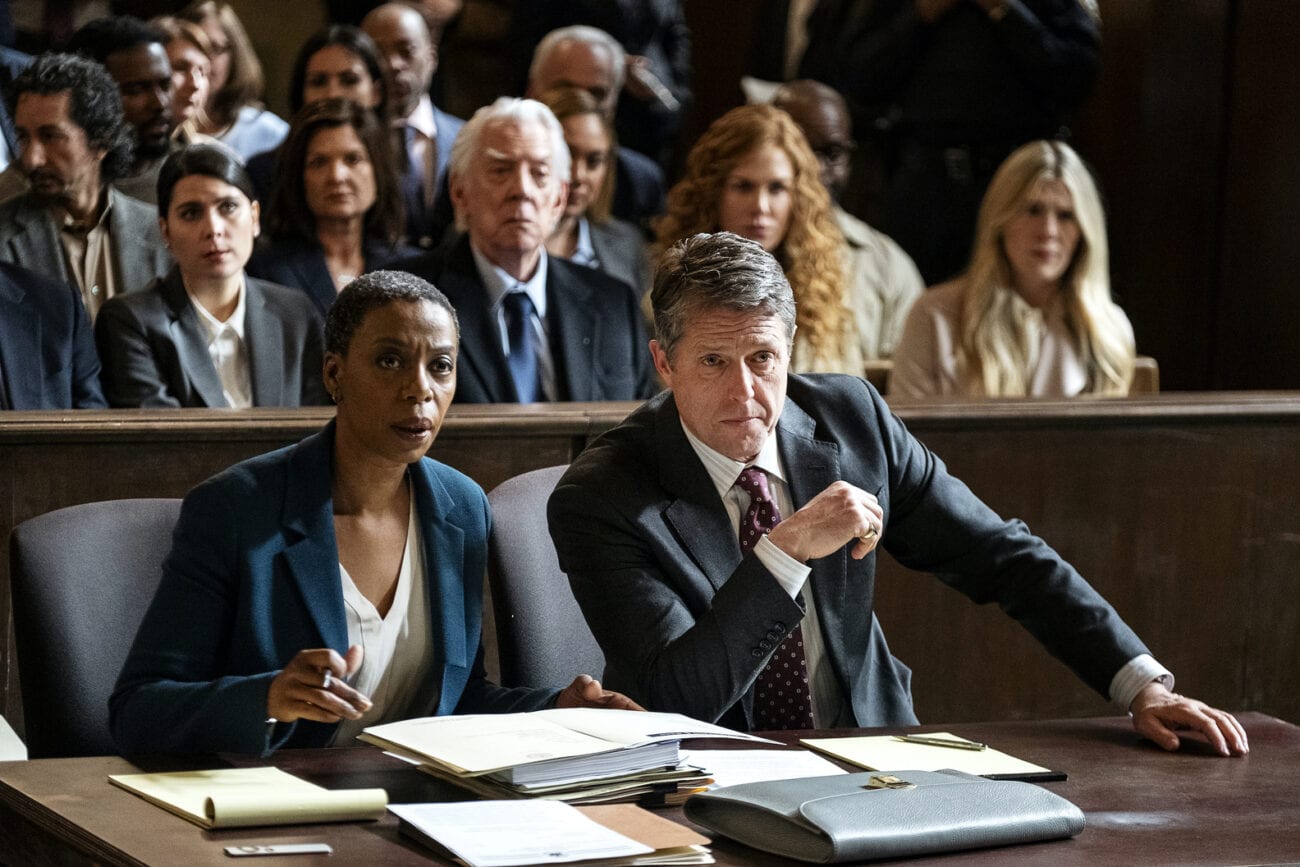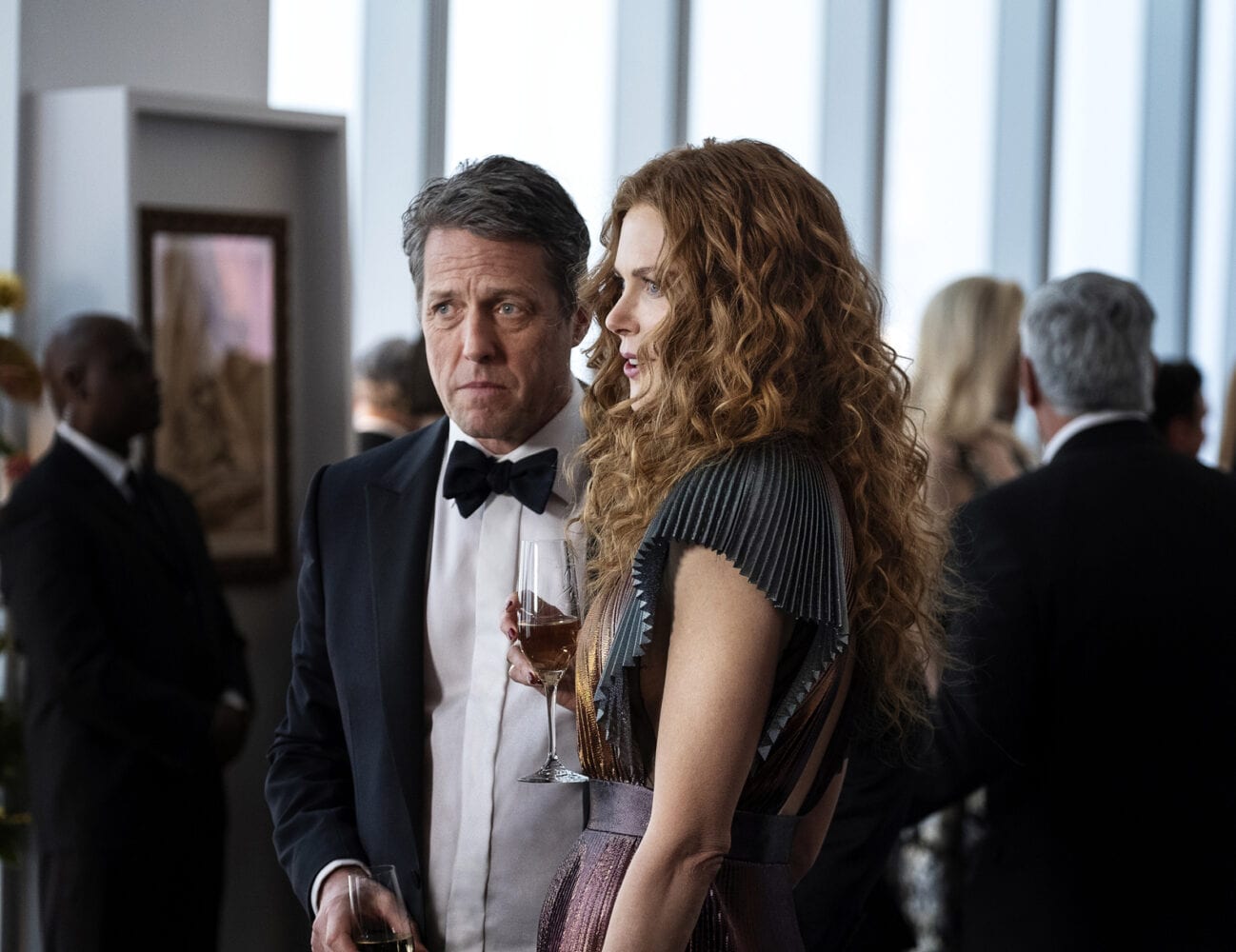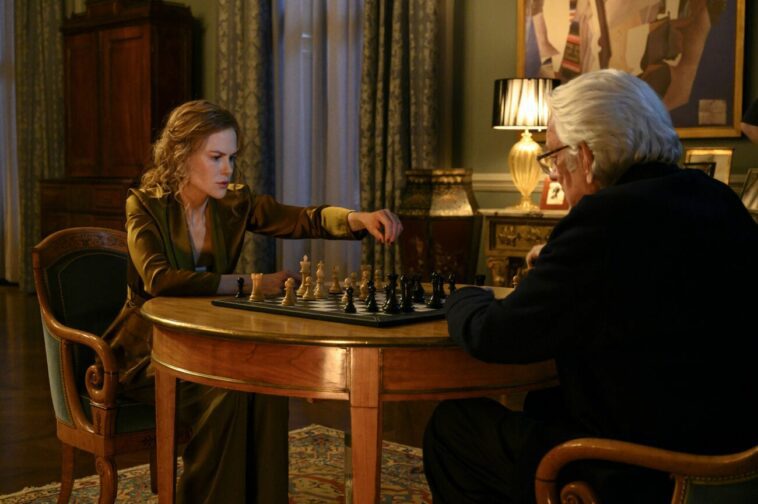I’ve said throughout The Undoing that I was more interested in its small mysteries than the putative big one. Unfortunately, having finished its finale (Episode 6: “The Bloody Truth) I can’t say that my curiosity was rewarded.
I wondered where Jonathan went when he went missing and I suppose we did learn that he drove to a motel in Lake George (if we take his word for it) but that doesn’t seem to matter in any meaningful way. I wondered how it was that the sculpting hammer could be in Henry’s violin case without the police having found it, and I guess the answer is either that they didn’t search the property where they arrested Jonathan or didn’t search it well. I wondered why Elena was crying at the fundraiser, and am left to speculate about that. Ditto as for Jonathan’s supposed trip to Cleveland and what he had been planning to do prior to the murder, unless I missed something.
The Undoing seems to wave its hands at all of this and ask us not to think too much about it. That’s OK, I suppose. This is a TV show after all, and in case you forgot for a moment Episode 6 will remind you almost relentlessly with its unrealistic portrayals of news coverage and courts of law.
But what’s somewhat harder to forgive is that the central mystery of the show—who killed Elena Alves?—only feels like one if you constantly bear in mind that you are consuming a work of fiction. I don’t know to what extent this criticism would hold water in relation to the book that serves as The Undoing’s source material. Perhaps there the mystery is put in the background in the way I hoped the series would do. But here, at least, in The Undoing, we are bombarded in episode after episode by television contrivances intended to create suspense.

This isn’t to say the narrative wasn’t suspenseful, but the real plot of the show was (or should have been) the story that occurred for Grace internally. We dwelled in her perspective at the beginning and perhaps The Undoing would have been stronger overall if we’d never left it—no scenes of Jonathan in prison or flashbacks to his time with Elena other than through Grace’s imagination.
Because it seems pretty clear that “The Bloody Truth” presents us with precisely that. As he drives in his car with his son, trying to get Henry to sing with him, Jonathan also murders Elena in interspersed flashback scenes. The Undoing thus makes clear that this is the reality of the event, such that there cannot be any real doubt about Jonathan’s guilt.
Of course, I never really doubted that he was the murderer anyway because there was no evidence in this story that he wasn’t. From an external point of view we may have been expecting some twist. Perhaps you believed he was innocent and Franklin did it. Why? Because he was portrayed by Donald Sutherland? There is hardly an answer within The Undoing itself for any of the speculation that occurred over the course of its run that anyone but Jonathan killed Elena.
Which again is OK if the story The Undoing is trying to tell is Grace’s story, as it should be. This is the story of a wealthy woman learning that her husband is not the man she thought he was. This is the story of her life falling apart in the aftermath of that revelation about his actions. True, she takes his side for some time because she wants to believe that he may be innocent of this heinous crime—she wants him to be innocent for Henry’s sake—but at the end of the day it is just too much, so she sabotages his defense.

We know that she did on purpose because it was only Sylvia to whom she’d told the things she’s questioned about on the stand, and after her testimony we see her holding Sylvia’s hand. This was a plan. Unfortunately it doesn’t really land in terms of character development. Rather, given how The Undoing has handled Grace’s character over the preceding few episodes, her behavior in Episode 6 seems rather inconsistent.
As she asks Henry whether he wants their family back together again and he turns the question around on her, leading her to respond that she wants what’s best for him, I truly thought that my prediction of Jonathan’s acquittal and so on was going to play out, as disgusting as that would have been. When instead she took the stand and sabotaged his defense, I was left wondering what her breaking point was. Was it the hammer? Am I thinking it was the hammer for any reason other than that being what Haley Fitzgerald said?
Weirdly, when Jonathan tried to cast suspicion onto his own son as he talked to Grace after the discovery of that hammer, it was the closest I came to thinking he might not have killed Elena after all. Not because he wasn’t the kind of person to commit murder, but because I didn’t see how it served his purposes in terms of burnishing his image in Grace’s eyes. But so perhaps that was the miscalculation on his part. Perhaps it wasn’t that the hammer made Grace finally accept that Jonathan was guilty (she knew that all along) but that what he said made her realize that her father was right about the need to get Henry away from him.
Grace would look past her husband’s infidelity, and even look past murder, for the good of her son. She’s willing to look past her son hiding the murder weapon to help his father. But whereas Henry would risk himself in order to help Jonathan, Grace learns that Jonathan would sell his son out in order to help himself. And he wouldn’t feel guilty about it.
He tries to tell Henry that this wasn’t the real him, and it wasn’t the real him who killed Elena. The real him is the good father; it’s the man that you love. To Jonathan it is the image of himself that is the most real, and which he strives to preserve throughout The Undoing. He believes he is not guilty because he doesn’t identify with the man who bludgeoned in Elena’s skull with a sculpting hammer. That’s not part of his image of himself, and so it’s not real.

Of course it does seem like Jonathan likely would have been acquitted if it weren’t for Grace’s actions on the stand. These don’t really redeem her so much as the court proceedings as a whole condemn our criminal justice system. Because while it is implausible to think that lawyers and others would be allowed to behave the way they do in this show in real life court, or that the proceedings would be anywhere near this dramatic, it is unfortunately all too easy to believe that a good looking rich white man would be able to get away with murdering a young woman of color because people simply don’t want to believe that a man like this would be capable of such a thing.
The beginning of Grace’s testimony is a parody, or should be taken as such, as she contends that Jonathan is simply not the kind of person who could have committed this brutal crime. I don’t mean it’s a joke because he did it in this case, but rather to question the very notion of character witnesses of this type, or of any weight being given to what they have to say. Perhaps such things should have some weight when it comes to sentencing, if it’s a plea for leniency, but even there all too often these concerns seem tenaciously tainted by biases pertaining to race and/or class.
I won’t claim to know what a truly just system would look like, but it’s clearly not what we see in The Undoing, where beyond the shield that Jonathan’s status seems to bring him we also get a lawyer who wink-winks at the destruction of evidence. And unfortunately it is in all of this that the show is at its most plausible.

